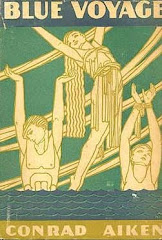
Why did they have to call that other fatal palace in Trieste also the Miramar, where Carlotta went insane, and everyone who ever lived there from the Empress Elizabeth of Austria to the Archduke Ferdinand had met with a violent death? Under The Volcano
Lowry is referring to the misfortunes that befell the Hapsburg family. Jan Gabrial recalls that she and Malcolm saw Anatol Litvak's Mayerling (1936) in Mexico City before they returned to the Hotel Canada for a tender night [Inside the Volcano, 157 & 187]. The film became an emblem of their love. Lowry states that "La Tragedia de Mayerling" was playing in the town just as it had been nine years ago. (Letter to Cape).


The Mayerling Incident refers to the series of events leading to the apparent murder-suicide of Crown Prince Rudolf of Austria and his lover Baroness Mary Vetsera. Prince Rudolf was the only son of Emperor Franz Josef I of Austria, and therefore heir to his father as Emperor of Austria, King of Hungary, and King of Bohemia. Rudolf's mistress Mary was the daughter of Baron Albin Vetsera, a diplomat at the Austrian court. The couple's bodies were discovered at Mayerling, Rudolf's hunting lodge, in Lower Austria on January 30, 1889. Read more on Wikipedia

Mayerling is a 1936 French historical drama film directed by Anatole Litvak and produced by Seymour Nebenzal from a screenplay by Marcel Achard, Joseph Kessel and Irma von Cube, based on the novel Idol's End by Claude Anet. The film stars Charles Boyer and Danielle Darrieux with Jean-Louis Barrault, René Bergeron, Jean Davy, Jean Dax, Jean Debucourt and Gabrielle Dorziat. It is based on the real life story of Crown Prince Rudolf of Austria, his affair with the 17-year old Baroness Maria Vetsera and their tragic end at Mayerling.
Here are some clips from the movie:




















































